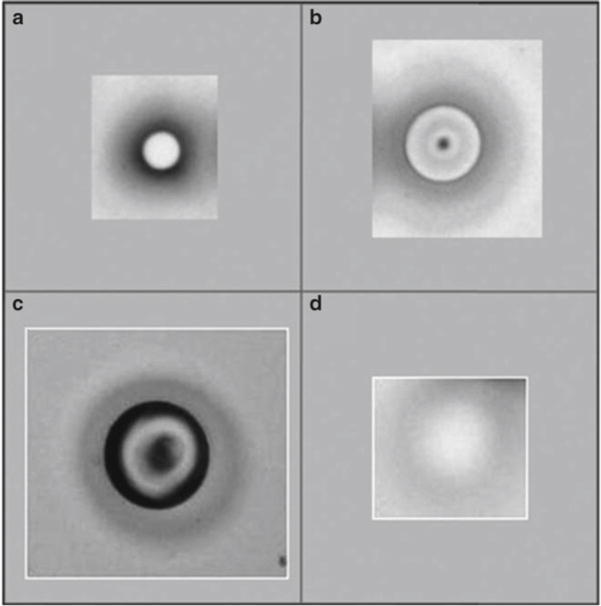Fig. 2.

Various laser pulse intensities and melting of the LCM cap polymer. The cap polymer contains a dye that allows visualization of the melted polymer. In (a, b), the appropriate laser pulse power, duration, and size is indicated, and the polymer is making good contact with the slide. In (c), the laser pulse was fired with too much power, resulting in blackening inside the ring. (d) Depicts inadequate power of the laser, and the cap film is not firmly contacting the slide. If this occurs, increase the power and/or duration, or adjust the positioning of the cap. If good contact is still not achievable, the LCM cap may be defective
